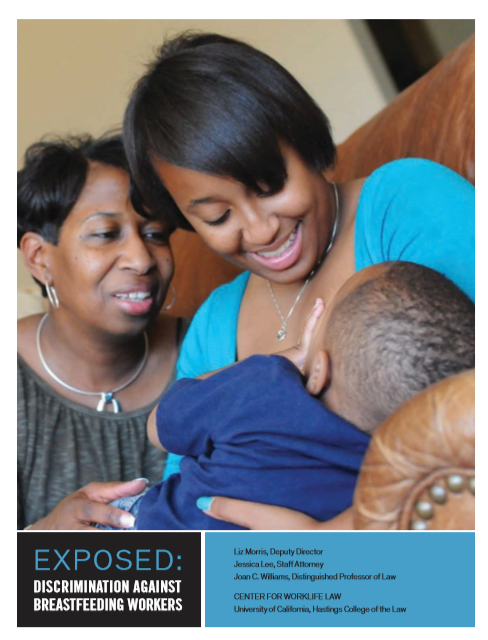New Groundbreaking Report from WorkLife Law Shows Widespread Breastfeeding Discrimination
The latest report from the University of California at Hastings Center for Worklife Law’s new report, Exposed: Discrimination Against Breastfeeding Workers, analyzes breastfeeding legal cases from the last decade to document patterns of discrimination, and analyzes new data on the scope of existing state and federal laws to protect against discrimination. The center found that 27.6 million women of childbearing age don’t have the basic protections needed by all breastfeeding workers.
“Breastfeeding discrimination is widespread and can have devastating consequences for women and their families” says Liz Morris, report co-author. “Despite a patchwork of laws giving legal rights to breastfeeding employees, millions still do not have the basic legal protections they need. Workers are losing their jobs to feed their babies. We’ve outlined a common sense policy solution that would fix this.”
The study found that while breastfeeding discrimination exists in many industries, it is most acute in male-dominated sectors. First responders, law enforcement, and other women in predominantly-male industries make up only 16% of women workers, but account for nearly half (43%) of breastfeeding discrimination claims. Workers in pink collar professions, such as nurses and teachers, are often left out of federal legal protections for breastfeeding workers.
“Our community helpers, like first responders and teachers, have given so much to us–yet we haven’t even given them the basic breastfeeding time and space they deserve” says Jessica Lee, report co-author. “Action is needed by the states to ensure all workers are protected, not just the lucky ones.”
The report features the stories of breastfeeding women who struggled with a lack of accommodations, hostility, and retaliation, including an NYPD police officer, an emergency room nurse, a kindergarten teacher, and a U.S. Air Force Airman.
Authored by Liz Morris, Jessica Lee, and Joan C. Williams, the report examines the consequences of breastfeeding discrimination, breastfeeding workers’ legal rights, and how current legal protections leave workers exposed. It offers the seven components of a model policy states can enact to ensure breastfeeding workers are able to earn a living for their families without jeopardizing their health.
The report is released alongside a first-of-its-kind interactive map of state laws that impact breastfeeding workers, available here. Breastfeeding workers, health care providers, and employers seeking information about breastfeeding accommodations, laws, and policies can visit our online resource center PregnantAtWork.org.
The Center for WorkLife Law’s family responsibilities discrimination research and educational outreach, including Exposed: Discrimination Against Breastfeeding Workers and PregnantAtWork.org, are funded by the W.K. Kellogg Foundation and the NoVo Foundation.


